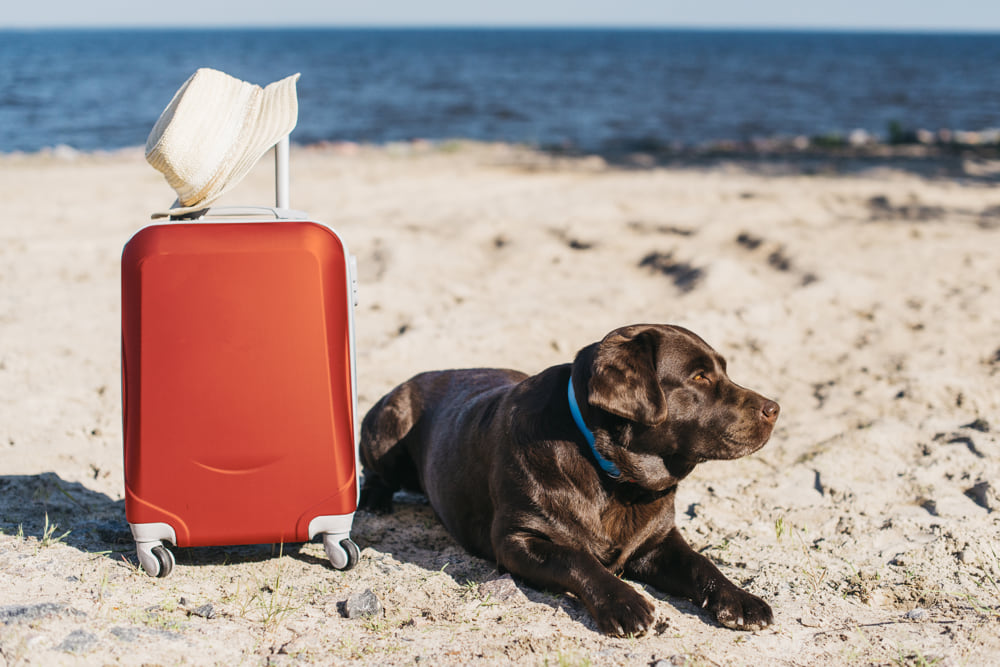The sheer joy of sharing life’s moments with a furry friend is a feeling many pet owners share. Thus, when the allure of a new destination beckons, leaving them behind isn’t always an appealing or practical option. All the same, it’s often not very simple to embark on an international adventure with one’s pet. Given factors like varied health standards and lengthy lists of customs regulations per country that a pet and a pet owner will visit, it can typically be very difficult stressful for you to cross borders with your four-legged friend in tow. Enter the pet passport.
The pet passport is a tool designed to streamline this very process. More than just a piece of paper, this document acts as proof of your pet’s health condition, identity, and vaccination status. In an ever-globalizing world filled with both human and animal travelers, the pet passport facilitates smooth travel between countries while upholding the health and safety standards of both the origin and destination.
If you’re considering international travel with your pet in the near future, here’s a handy guide to what a pet passport is and how to secure the right travel documentation for it.
What Is a Pet Passport?
The term “pet passport” might evoke images of a miniature, furry-faced version of your own passport, complete with a dapper photo of your pet. But in reality, a pet passport is more like an amalgamation of various health records and certifications. The most important function of a pet passport is to certify that your pet is free from diseases that could pose a risk in the country you’re traveling to.
In the European Union (EU), a pet passport is a recognizable blue booklet. It’s expected to contain crucial details about a pet, such as their microchip number and vaccination history. This unified system of standardized requirements is meant to simplify the traveling process for pet parents who frequently traverse the EU member states.
On the other hand, in the United States, there isn’t an official “pet passport” per se. Instead, the term colloquially refers to the collection of vital documents needed for international travel. These might include health certificates, proof of recent vaccinations, and other health documentation required by the destination country. It’s the pet owner’s job to collate all these documents to facilitate a smooth and hassle-free trip for both themselves and their pet.
In addition to testifying that your pet has a clean bill of health, pet passports also confirm that your pet can be properly identified in the unlikely event that you get separated. Many countries, for instance, will require your pet to be microchipped before they’re allowed to enter. This measure, in addition to visible identification such as dog collars and custom dog leashes with attached ID tags for traveling dogs, is not a mere bureaucratic requirement. It’s critical for preserving your pet’s safety and security and can give you much-needed peace of mind during your trip.
What Pet Owners Need to Know about Pet Passports
The process of obtaining a pet passport is governed by rigorous standards aimed at safeguarding the health and security of both pets and their humans. It’s thus in your best interest to understand what your pet’s travel papers represent and the responsibilities that come with them. Here are a few need-to-know guidelines to bear in mind:
1. Vaccination Requirements
At the core of most pet passport requirements lies a stringent emphasis on vaccinations. Up-to-date vaccination against rabies, a zoonotic disease posing risks to both animals and humans, is likely to be one of the most important health requirements for your pet to be allowed to travel.
It’s not just about the initial shot, either. Some countries demand a specific waiting period post-vaccination before they allow entry, while others might require a titer test to ensure the vaccine has provided adequate immunity.
2. Age and Breed Restrictions
Many countries set a minimum age limit for traveling pets, often to ensure that they’ve received necessary vaccinations and are robust enough for the journey. Typically, very young animals like kittens or puppies face these restrictions. Moreover, certain breeds might face additional scrutiny or be disallowed from entering certain territories. These usually include some dog breeds deemed “aggressive” or those with specific health concerns.
3. How Often the Pet Passport Needs to Be Updated
Think of a pet passport as a living document. Just as your pet grows and changes, so too should their passport. After each vet visit, especially following new vaccinations or treatments, you’ll need to update their passport. Some treatments, like those against ticks and tapeworms, have validity windows, and ensuring your pet’s passport reflects the most recent treatment can spell the difference between smooth travels and unexpected quarantines.
4. A Pet Passport Is Not a Universal Document
The term “passport” can be misleading because of its association with human passports. Unlike the latter, a pet passport doesn’t offer carte blanche access across borders. Each country, given its unique ecosystem and health concerns, has its own requirements for both incoming and outgoing pets. For instance, while one country might be satisfied with just a rabies vaccination, another might demand additional tests or treatments against specific diseases endemic to their region.

Tips for Applying for Pet Passports
No matter where in the world you live, you can expect to encounter some complexities when applying for a pet passport. Preparation and proactivity throughout the process can save time, money, and undue stress, making the journey with your pet a more enjoyable experience.
1. Start the Process Early
International travel with pets is not something one can arrange on a whim. Knowing the potential waiting periods for certain tests and the need to gather various certifications, it’s prudent to initiate the process well in advance of your travel date. Give yourself a buffer to ensure that you’re not caught off guard by unexpected delays or last-minute requirements.
2. Stay Up to Date on Your Pet’s Vaccinations
Consistent vet check-ups not only safeguard your pet’s health, but also simplify the pet passport process in general. When traveling internationally, errors on your pet’s health records can result in denied entry or a prolonged quarantine. If you and your veterinarian take steps to record all your pet’s vaccinations in a timely and systematic manner, there’s less room for such oversights.
3. Plan for the Required Expenses
Traveling with pets, while rewarding, does come with its own set of costs. For expenses like vet visits, the cost of obtaining key health certifications, and in some cases, potential quarantine costs, it’s vital to be financially prepared. Draft a rough budget beforehand to mitigate unexpected expenses and pave the way for a smooth journey for you and your pet.
4. Check the Airline Requirements
Every airline has its regulations when it comes to passengers with pets. While you might be armed with all the required documents for your destination country, the airline might have additional stipulations, such as required crate sizes or feeding guidelines. Familiarize yourself with these requirements ahead of time to avoid last-minute hiccups on your trip.
5. Find Vets in Your Destination Country
Hope for the best, but prepare for the unexpected. It is all the more stressful to be in a foreign land with a pet if a health issue arises. Before embarking on your journey, research and list down reputable vets or animal clinics in your destination. Such foresight ensures that, in case of emergencies, you won’t be left scrambling.
With the right knowledge and preparation, it won’t be as hard for you to obtain all the prerequisite documents for your pet passport. Refer to the tips above to finalize all the international travel requirements for your pet and, soon after, go on an unforgettable global adventure together.






